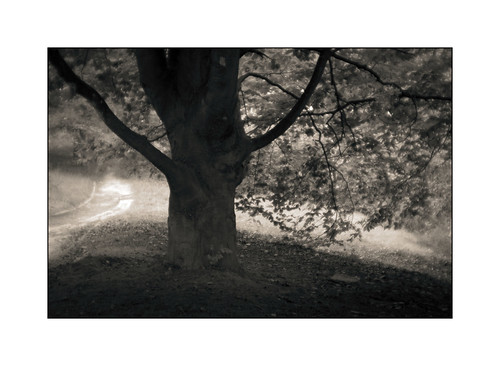The past year of confinements, restricted movement, and closures of nearly everything I enjoy (museums, motor events, restaurants, cafes, gardens, visits with friends, travel outside the country, etc) has given me far too much time to ponder various photography topics. I would much rather be out making images, but for obvious pandemic reasons this clearly is not possible.
For seemingly ever I've been interested in camera system resolution. From large format optics to current small format optics. I've looked at hundreds and hundreds of systems. I've spent years and years poking and prodding at this to finally understand that, in general, light sensitive materials (analog film, digital sensors) limit resolution. With very few exceptions I've not met a "bad" lens that couldn't out-resolve the light sensitive materials.
Then, just a couple years ago I had a look at the transition from in focus to out of focus. This was really quite interesting. I learned that the best lens designers work hard to implement lenses that are "pleasing" in just this one narrow area of lens design. Which led to my learning about how under-corrected spherical aberrations behind the point of focus helps create a softness and delicateness in an image that is highly regarded, particulary in Japan.
From there it was a very short jump to briefly looking at soft focus lenses. The Pentax 85mm f/2.2 Soft was a somewhat strange lens to me. Along with the obvious optical properies of "softness", the Pentax Soft has curiously deep depth of field, even shot wide open. It turns out that this is one of the side effects of lenses designed with a large amount of under-corrected spherical aberrations behind the point of focus.
The Pentax Soft seems to fly in the face of current lens design. Today it seems that photography is nothing if not needle sharp in rendition. Yet, there used to be a significant movement in photography that accepted and included images made with soft focus lenses. Pictorialist photographers turned out some very fine work from the late 19th to well into the 20th centuries. I enjoy looking at images that span time from Clarence White to William Mortensen.
Thinking of this kind of photography I recalled the soft works of David Hamilton. His images had an important presence in southern California where I lived during the 1970's and 1980's. He seemed to use several different techniques for creating his images. While trying to work out his various techniques I was led to a current day photographer by the name of Max Stolzenberg.
Max makes the claim that "... We can assure you that no filters, neither analog nor digital, have been used to shoot this picture! ..." Even at a glance the image he refers to appears to be modified from what one would expect out of a camera system, regardless of date of manufacture.
If I take Max at his word, I am immediately presented a mystery. How does he get his soft effect if he doesn't use a filter? And, by extension, how did David Hamilton get the soft effects he did?
This series of "Soft Focus ~ ..." articles will explore some of the possibilities for how soft focus image can be created. With luck I may come closer to technically understanding how to recreate the styles of David Hamilton, Clarence White, and perhaps even Max Stolzenberg.

No comments:
Post a Comment